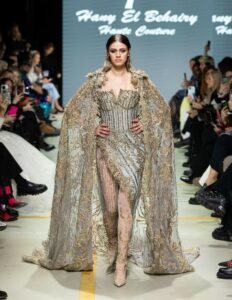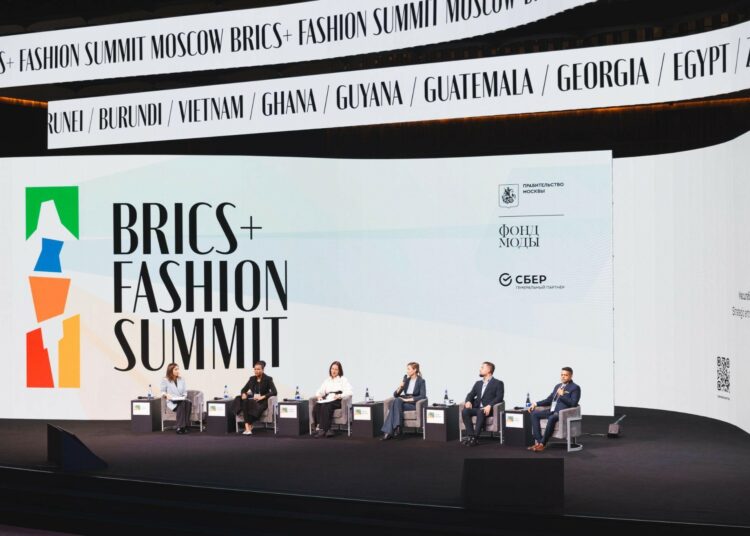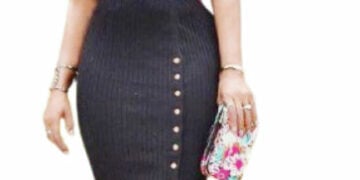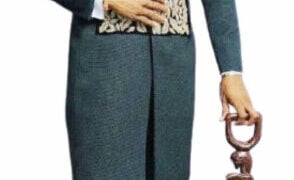Representatives from over 60 countries converged in Moscow for the highly anticipated BRICS+ Fashion Summit, hailed as the most representative fashion event of the year. Distinguished participants, including specialists from the African continent, added a unique and vibrant perspective to the summit. BRICS+ Fashion Summit served not only as a showcase of global fashion diversity but also as a platform for meaningful discussions on sustainability, cultural preservation, and the current and future trajectory of the fashion industry on an international scale. The BRICS alliance served as a cooperative platform, bringing together colossal consumer markets capable of influencing global fashion trends. This went beyond merely adopting trends from developed fashion markets; it aimed to establish trends that emanate from within the BRICS nations, Middle East, Southeast Asia, Latin America and Africa.
Key African Fashion Influencers at the Forefront
Notable figures such as Adama Amanda Ndiaye, the founder of Dakar Fashion Week, along with Priscilla Chigariro and Marshall Mutsamwira from Zimbabwe Fashion Week, Makeba Boateng from Fashion Forum Africa actively participated. The roster also featured the presence of renowned South African designer David Tlail, Gregg Maragelis, Head of Institution and Director at Cape Town College of Fashion Design, and Stephen Manzini, the founder of Soweto Fashion Week.
At the crossroads of November and December, with the backdrop of a chilling Moscow winter, Africa strongly established itself on the global fashion map. Nearly a third of the nations at the summit hailed from Africa, underscoring the continent’s substantial presence in the industry.
Meanwhile, Moscow’s abundant hospitality, akin to a thaw that melted the frosty air, warmly embraced the African participants. To fend off the biting cold, the organizers thoughtfully provided a ‘Winter Remedy Kit.’ This bundle contained winter essentials — a cozy hat, woolen gloves, a scarf, and even a lip balm to combat the chapping cold.
Zimbabwe’s Beona Gapare, the keen mind behind Digital Talent, commended these thoughtful gestures that painted the frigid weather almost favorable. With their defenses fortified gracefully against the Russian winter, the African delegates relished their foray into Moscow’s historic sites. Their exploration included visits to the monumental Kremlin Museums, the enchanting ice rink at Red Square, and the expansive VDNH Expo which showcases a huge Russia Exhibition representing all corners of the hosting country. Undoubtedly, Moscow’s gracious hospitality set the stage, ultimately culminating in a fruitful exchange in the fashion sphere.
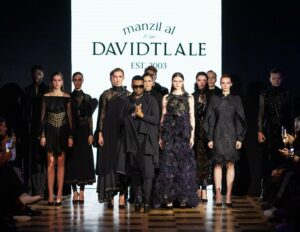
Preserving Cultural Identity Through Fashion
The event also brought attention to David Tlale’s collection, inspired by South Africa’s diverse heritage. The brand was acclaimed for its elegant, bold, and high-quality designs, prioritizing style and craftsmanship. With a focus on environmental responsibility and community support, David Tlale aimed to solidify its position as a leading design house in South Africa, a role it had held since its establishment in 2002.
In the interview David Tlale expressed, “I believe that the BRICS+ Fashion Summit is a very important platform for all of us, because we are building something that has never happened before. And I believe if we stand together as BRICS+ countries, we can be able to build bridges that ensure, that is straight, that is investment. And also that’s cross-pollination of culture and diversity among all of us.”
On the first day of the event, Tlale, experiencing Russia for the first time, expressed his enthusiasm. He appreciated the warmth of the people and looked forward to the unfolding events in the next three nights. David Tlale also believed that the fashion industry in South Africa was at its growth point, transcending mere clothing production to a deeper understanding of the business of fashion. He envisioned South Africa as a trendsetter and leader in the global fashion arena.
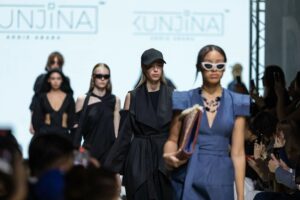
Global Collaboration Through Fashion
The BRICS+ Fashion Summit functioned as a catalyst for cultural interchange, fostering global collaboration and facilitating market access. It nurtured a dialogue that surpassed geographical and cultural constraints within the fashion industry. The participants, including speakers and designers, voiced their positive impressions of the summit in Moscow.
Marshall Mutsamwira, Director of Zimbabwe Fashion Week, shed light on the significance of local brands and cultural identity in Africa, emphasizing the importance of preserving and promoting unique fashion identities while drawing inspiration from the diverse and rich textile traditions that characterized the continent.
Katie Kendal, a designer from Burundi, spoke about her brand “Ketange,” expressing the event’s significance for foreign designers. She saw the summit as an opportunity to introduce her culture, outfits, and creations to other countries.
Sonia Noel, a designer from Guyana with African roots, anticipated that new collections from many designers would be inspired by Russian culture post-BRICS+ Fashion Summit. Sonia highlighted that fashion is a universal language, expressing freedom and transcending borders. She emphasized that fashion speaks to love, unity, and peace, always bringing people together.
Mmantlha Sankoloba from Botswana shared her perspective on cooperation, emphasizing that in the global open economy, collaboration depended on mutual interest. Market access emerged as a key point for all participants, with a focus on fair trade and collaboration with local designers to integrate diverse cultures.
Adama Amanda Ndiaye from Senegal, in sharing her perspective, emphasized the importance of nurturing young and small brands, underlining the need for internal growth and recognition of their value. She highlighted Africa’s evolving fashion industry, driven not by haute couture but by the scaling of brands, particularly those championing sustainable development through recycling, reusing, and upcycling.
